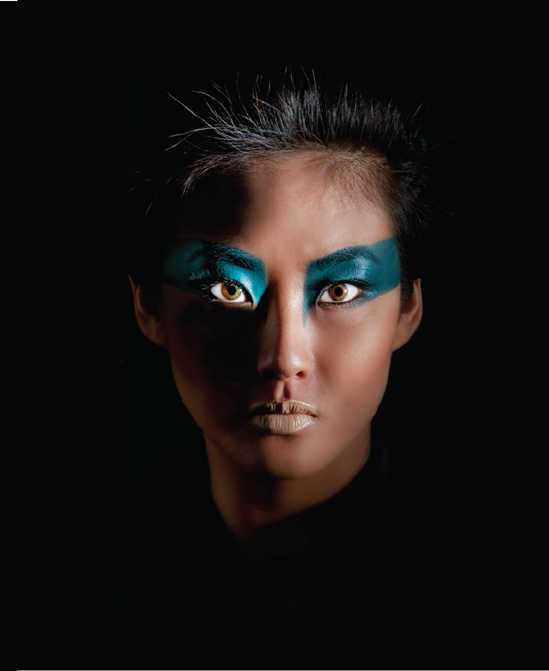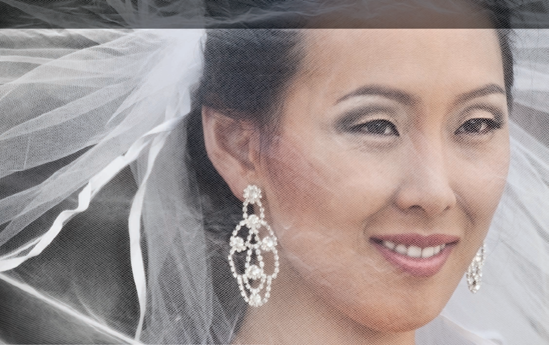
Photographer Jay Maisel quips that he always carries his camera with him because "it's hard to take a photo without a camera" In a similar spirit, it's hard to make a portrait without a subject I can see this sung to the tune of the Barbra Streisand lyric "People who need people": if you are going to make photos of people, you need people, or at least a person.
So, it's pretty obvious that as a portrait photographer one must become comfortable photographing people But unlike flowers, trees, landscapes, and still life subjects, people have their own ideas People talk back, they move around, and can be smelly, dirty, and loud People you approach to photograph may think you are flirting with them, rather than approaching on a photographic basis In short, the interaction between a photographer and a portrait subject is fraught with the entire gamut of complexities that enters into any relationship between people.
In some cases, this interaction between photographer and portrait subject begins in a straightforward way If someone has hired you to make a portrait, or if you have hired a model, there's certainly no guarantee you can make a great or revealing portrait But at least the initial parameters of the relationship are clear (see pages 14–27 for more about the psychology of photographer-subject interaction).
It's a whole different story when you photograph a stranger who has not asked to be photographed If the thought of going up to someone you see who looks interesting and asking whether you can take their photo makes you nervous, then to become an effective portrait photographer you need to work on this A little bit of nervousness is a good thing—it keeps you on your toes—but too much can be paralyzing.
My oldest son and I went looking for a firefighter to photograph. Everyone at the first fire station we visited was busy—after all, they do have more important things to do than model for a visiting photographer. But the lieutenant suggested we visit another station in the hills that tended to be less busy.
At the second station, this veteran firefighter graciously donned his full turnout gear and posed for me. I photographed him by the natural light in the garage filled with fire engines.
1/80 of a second at f/4.8 and ISO 640, hand held
Pages 56—57: I like to use gauzy fabrics as a prop in my portraits. Many colors work well, but white is probably best—white transparent fabric adds a nice romantic light. And what could be more romantic than a white wedding veil? The only thing to be careful about is creases in the fabric—these should not cover important facial features.
This bridal portrait was created using natural light against a stone monument, with the breeze blowing the veil around. I selectively desaturated the image in Photoshop (keeping the color in the bride's face) to emphasize the impact of the veil.
1/250 of a second at f/5.6 and ISO 200, hand held
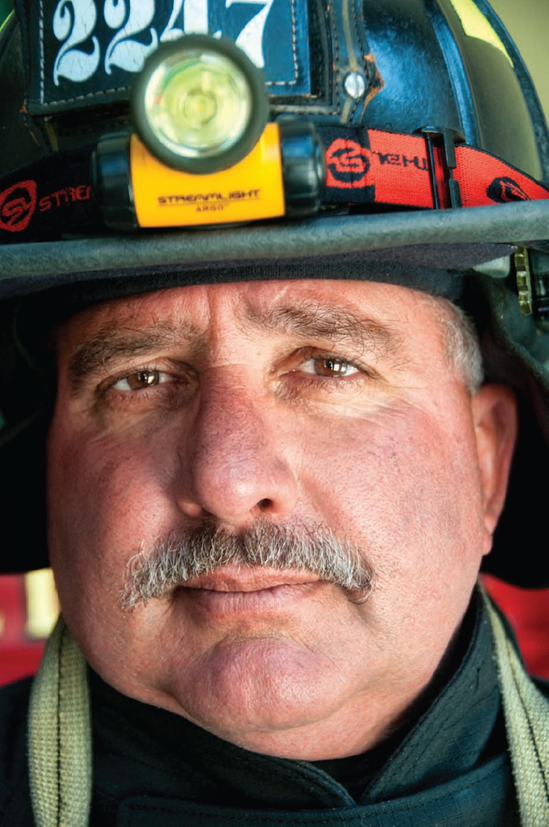
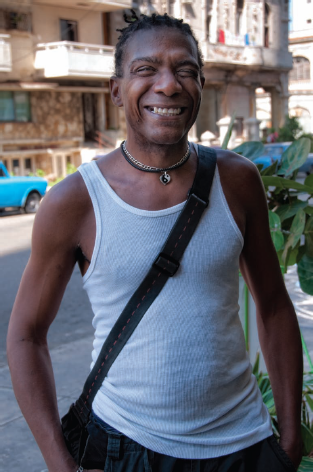
Becoming comfortable photographing people without an official photographer-subject relationship pays dividends across many kinds of photography Not only will you be better at people photography, you'll also have more confidence in approaching static subjects, and in photographing models Photographing people you meet casually requires improvisation and the ability to be quick on your feet—good skills for any photographer to have.
The best way to get comfortable approaching people with photography in mind is to get out there and actually approach people. "Gee," I can hear you saying already, "thanks" a lot Harold for that pearl of wisdom.
Okay, you don't have to get snippy with me Here's what I have in mind.
Approaching someone you don't know—or maybe only know slightly—with any request brings up the gamut of emotions we carry around since we were kids in the school yard Will we be rejected? Will we be taunted? On the other hand, acceptance means cathexis, the creation of an emotional bond between yourself and the other person, howeverslight and transient Both rejection and acceptance have powerful effects to our psyche.
The only way to get past fear of rejection and embarrassment is to practice approaching people There's no substitute for actually going ahead and walking up to someone Look at it this way: what's the worst that can happen? You might get rejected So what? There are millions of people out there for you to photograph.
In my workshops, I suggest some simple exercises to get comfortable photographing people. Here are two ideas:
Take your camera to a busy street corner. Make portraits of five people, asking their permission first.
Think of a job that involves physicality that interests you; for example, being a fire fighter, carpenter, or cook. Now go to a related work place (fire house, construction site, or restaurant) and ask for permission to photograph (obviously, your shots should include people).
If you are planning to license your photos—or think there is a chance that you might want to license your photos in the future, for example through a stock agency—you need to get a signed model release from your subject It's usually better to get the model release signed before you start taking photos—or at least to get an agreement in principle that a release will be signed—before you push the shutter.
On my first afternoon in Havana, Cuba, I wandered the tropical streets in a bit of a daze. From out of nowhere this man appeared and offered to show me some "things tourists don't usually get to see." I wasn't sure whether to trust him, and I think he sensed my uncertainty—you can see this in his guarded, partially closed eyes and the overly forced smile.
I shot this photo in bright shade, overexposing a bit more than I would have for someone with a lighter skin tone.
36mm, 1/160 of a second at f/6.3 and ISO 100, hand held
However, don't let the need for a release stop you from taking photos Even after the fact it is usually easier to get people to sign model releases than you might expect It is better to snap first and negotiate for a release later than to miss the opportunity for a great shot.
I carry a small stack of model releases in my camera backpack as part of my kit so I'm always ready to get a release when the situation arises Don't forget to pack a pen as well, so you aren't wasting time fumbling and trying to find one.
My model releases are printed one per page, so each person I photograph signs their own release Another viable scheme has the language of the release printed on the top of a form with a list of signature lines for subjects to sign Sometimes the comfort of having other signatures on the form will help induce reluctant subjects to sign.
I approach the topic of model releases with photographic subjects in a straightforward and open fashion I explain that I am a professional photographer, and that I have no current specific use for the photos I am taking (assuming this is true) I hand out a business card with the web address for my portfolio I explain that if I want to use a photo in the future, I'll need to get a release I try not to make too many specific promises about sending copies of my photos in exchange for the release—frankly, my life is busy enough without adding this commitment to my list—but I will offer to send files if that's what it takes to get the release I make a note of anything I've said I'll do on the signed release form so that it doesn't get overlooked.
As long as they understand what you are asking, most people are happy to sign your release form.
If you are photographing someone under eighteen, make sure that a parent signs the release.
You can easily find sample model release forms by searching online, or from professional associations such as the American Society of Media Photographers (www.asmp.org), or stock photo agencies such as Getty Images (www.gettyimages.com).
Marcus works at Gioia Pizza, the best place for pizza-by-the-slice in Berkeley, California (if you are ever visiting Berkeley, stop by and try a slice). I found his face and friendly nature interesting, and asked if I could photograph him. I used a small flash unit mounted on top of my camera to make this portrait in the low-light conditions of the pizzeria.
Top: This distinctive crop shows Marcus's eyes to good effect. I liked the expression in his eyes a great deal, and to fully capture it I was willing to "break the rules" by cutting off his mouth, though leaving a hint of a smile.
Bottom: As Marcus worked, I pointed the camera down to create a photo that shows someone who is contemplative and focused on his job, not the camera.
Both: 105mm macro, 1/60 of a second at f/6.3 and ISO 200, hand held
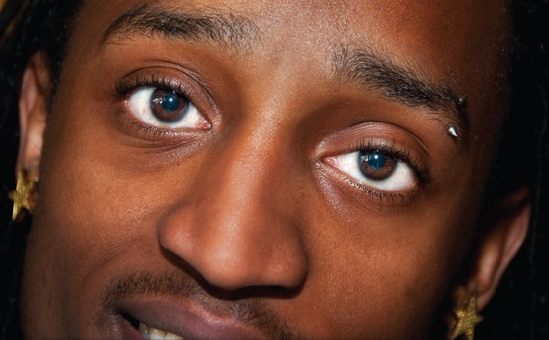
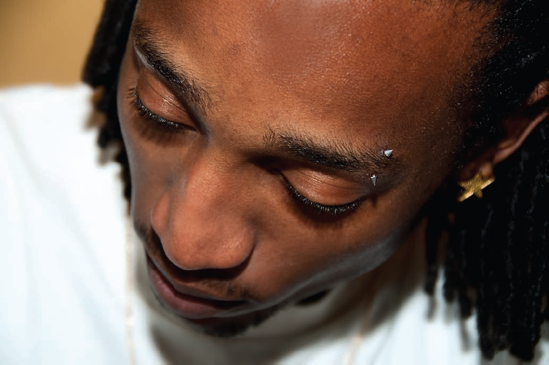
Composing portraits is a great deal like composing any photograph You need to consider the formal aspects of composition: the lines, shapes, patterns, framing, and colors involved For this aspect of portrait composition, it is often helpful to think of your subject as a landscape It really doesn't matter whether you are photographing a starlet in a hula hoop or a dramatic mountainside; composition is composition To learn more about composition generally, check out my book Creative Composition: Digital Photography Tips & Techniques(Wiley).
As with any photograph, how you compose your portrait will telegraph to the viewer what is important within the image. You need to take care to place subjects within your frames and in relationship to other elements of the image in a way that is visually interesting and tells a story.
When looking at a photo, a viewer's eye tends to go first to brighter areas that are in focus. It's also natural to first look at the eyes in a portrait. The eyes are a very central element in the composition of any photo that involves portraiture. If there is a face in the photo, probably the eyes of your subject should be in focus.
Don't underestimate the impact of details Many times jewelry, small things that a person is wearing, or a hand gesture can tell us a great deal about a person We aren't always conscious of the source of our information, but most of us are able to read these intimate visual cues to form a picture of the complete person.
Photographic composition of photos of people does differ from composition of inanimate subjects such as landscapes in one important way: you can direct, or suggest, that people move to a location or pose in a specific way.
I'd suggest that you not abuse this power Good professional photographers are used to telling portrait subjects, or groups of people they are photographing, how to arrange themselves for the best results But they do this with a sense of humor and an awareness of the context of the situation Oddly, pushy amateur photographers can have a tin ear about when their subjects have had enough—and then are surprised at the mediocre results The moral here is to be sensitive to the nuances in the responses when you make a suggestion that may enhance your composition.
I got my camera ready on a tripod pointed at the playhouse windows, then directed my three-year-old son Mathew inside. I asked him to open the windows, and quickly snapped the photo using a fast enough shutter speed to stop his motion.
The open window acts as a framing device and helps make the composition of this portrait effective.
95mm, 1/500 of a second at f/5.6 and ISO 200, tripod mounted
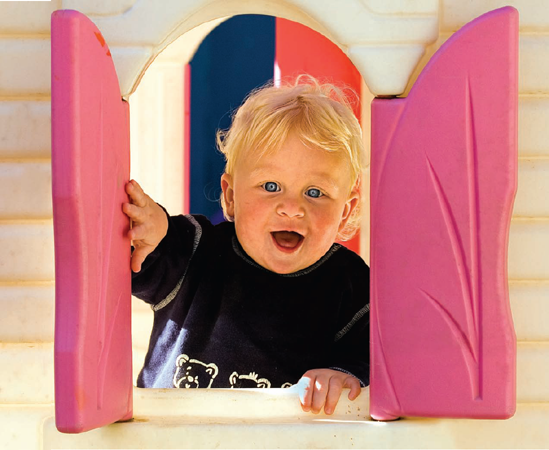
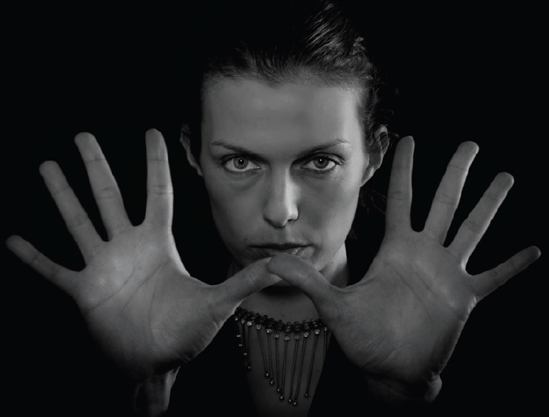
By positioning the model's face so that it is framed by her hands, I created an unusual and striking monochromatic composition in this portrait shot.
70mm, 1/100 of a second at f/6.3 and ISO 100
My idea with this photo was to make as flat a composition as possible using a macro lens. The only distinctive element in an otherwise featureless "landscape" would be the belly button and ornament. I used studio strobe lighting to evenly light this model's stomach.
200mm macro, 1/200 of a second at f/6.3 and ISO 200 tripod mounted

Street photography is portrait photography in public places where the subjects are mostly people you don't know This tends to be "grab shot" photography—shooting images on the fly The opportunity is to take advantage of people in their natural environment doing their thing, ultimately creating work that is more natural than photos taken in a posed, artificial environment.
If this approach is to work, then your subjects need to be distracted Certainly, some street shots work when the subjects have apparently taken some notice of the photographer But casual, spur-of-the-moment photography on the streets usually doesn't work out so well if you are the only thing that's interesting What the street photographer needs is distraction Distraction comes in many forms: farmer's markets, block parties, emergency sirens, other people, stores for window shopping, and so on.
The great photographer Henri Cartier-Bresson helped define the fields of photo-journalism and street photography He coined the phrase "decisive moment" to describe the elegant, apparently spur-of-the-moment compositions that have come to be emblematic of Cartier-Bresson's style Often Cartier-Bresson stalked his decisive moments by composing a photo and then waiting for hours with great patience for the additional elements that made his image sublime He knew his decisive moment when he saw it, and was able to snap his photos accordingly.
You may not have the patience to use a strategy that employs so much waiting. However, street photography inherently does involve recognizing the shot when you see it—and acting without delay. Slight changes in posture, expression, and attitude can make a big difference. If you don't make the photo when you first see it, you will likely lose it—and only have yourself to blame.
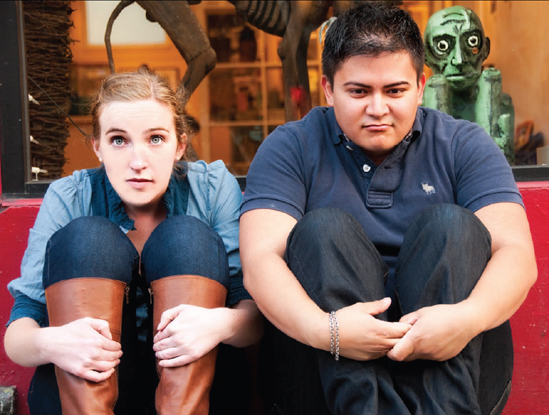
I posed this couple on the sidewalk in front on an art gallery, and asked them to mimic the expression on the statuette's face. The photo works because of the inherent humor in juxtaposing the expression on the sculpture with that on the models' faces. It's also clear that the subjects of this photo are enjoying themselves—and this enjoyment translates into a photo that is fun to look at.
The couple in the photo were hamming it up, and I kept on shooting, trying to capture the best moment. This version is the one that worked best.
62mm, 1/60 of a second at f/4.8 and ISO 500, hand held
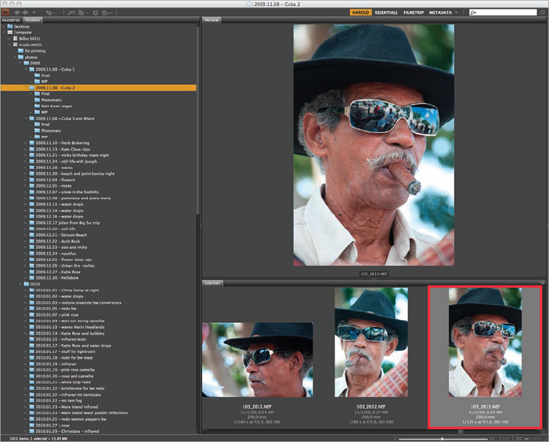
Open air markets, street fairs, and carnivals are among the best places for street photography because everyone is so busy and having such a good time that they don't pay much attention to photographers.
I photographed this guitar player in a small square in Cienfuegos, a provincial Cuban capitol.
Above: The guitar player was moving around as he performed You can see several of my shots in Adobe Bridge—only one of them was framed to make an interesting composition.
Right: Nearby, a street fair was taking place In the square, musicians played, kids exercised, and people relaxed The story of the activity of the square is told in the reflections in the guitar player's sunglasses.
200mm, 1/125 of a second at f/5.6 and ISO 200, hand held
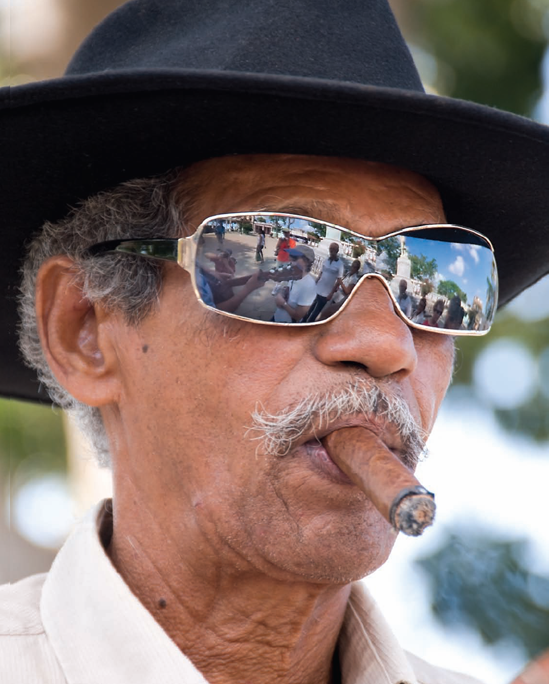
An environmental portrait is a portrait created in an environment that is significant to the subject Typically, this is the subject's home or work environment—and not in the photography studio or on the street—although other environments are possible In any case, the key point is that the environment shown in the photo shows something important about the subject of the portrait In a good environmental portrait, the background not only adds information, it also brings an entirely new visual dimension to the photo.
It's often a great idea to photograph someone where they live, work, or play People are more comfortable and therefore more themselves in places they are used to.
When making these kinds of portraits, you should think expansively Take the idea of an environmental portrait beyond where it normally goes There's nothing that says that you have to limit the scope of your vision to a boring office or a neatly manicured living room.
It's always important to consider the background in your portraits, how the background relates to your subject, and how the inclusion of an environmental background enriches a given portrait Considering these questions gives rise to a true sense of what environmental portraiture is about—and will help you create portraits with more depth, even when only a small bit of environmental background is included.
The center of this composition is a woman reading in her home in provincial Cuba. Even though she is the subject of the portrait, she appears quite small in the photograph, which is unusual. Part of the point of showing this woman in the environment of her home is to show the sparseness of possessions, even in relatively well-off Cuban homes.
Two exposures combined in Photoshop, each exposure 20mm, f/22 and ISO 400, tripod mounted; exposed at 1/10 of a second and 1/25 of a second
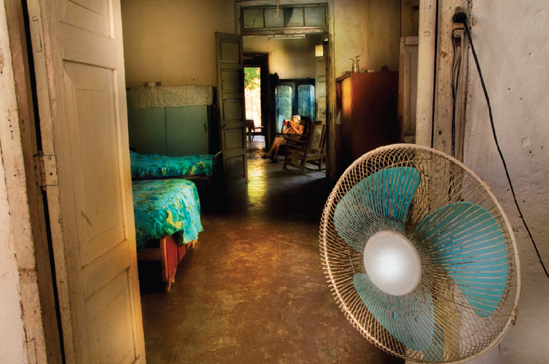
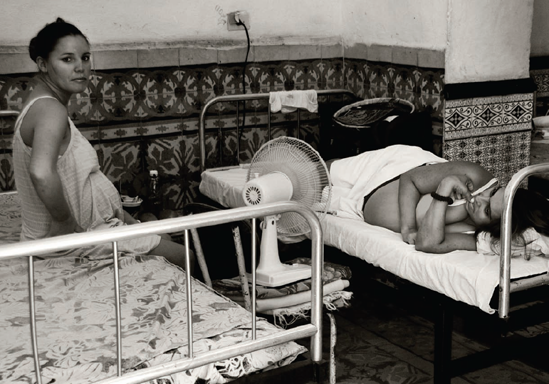
I photographed these women in a high-risk pregnancy ward in Trinidad, Cuba. The physical environment of the ward—with no medical apparatus present—says as much about their situation as the way the women look.
27mm, 1/60 of a second at f/4.5 and ISO 400, hand held
This school teacher was the lonely custodian of a house for visiting teachers. The house was largely destroyed during the last hurricane that passed through Cuba and never fully rebuilt. His expression seemed to echo the emptiness of the facility he was responsible for.
I photographed him using a wide angle lens (12mm) to help emphasize the sparseness of hissurroundings.
12mm, 1/100 of a second at f/5.0 and ISO 160, hand held

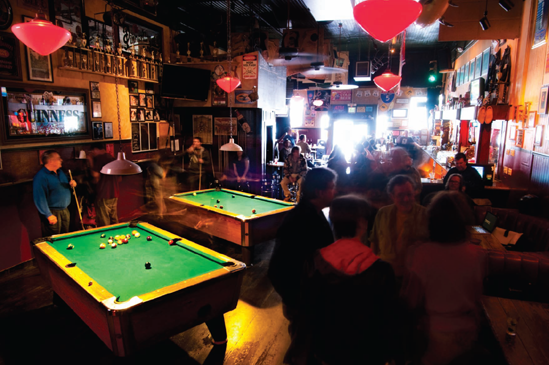
There's no single person distinctly shown in this long exposure (4 seconds) taken inside a pool hall and bar. But the environment itself, even without a clearly delineated portrait, can say a great deal about the people in the bar—at least to the extent that the viewer probably has a preconceived notion about the kind of people you are likely to find in this environment.
16mm, 4 seconds at f/10 and ISO 200, tripod mounted
For many people, more than half their waking hours are spent working Much of the most exciting and visually interesting things we do occur while we are at work For every boring desk job, there is someone professionally blowing glass, fixing cars, or climbing trees—doing something dirty and possibly dangerous that can be photographed.
These jobs may be boring and repetitive to the people doing them, but for us as photographers they represent several opportunities Someone at work gives a photographer thechance of using the occupation to show something about a portrait subject The job itself may present great narrative possibilities—even if it is boring, the repetitive routine will hopefully be leavened with bits of humor.
Finally, work is the greatest distraction Even if you are not particularly interested in the visuals of the job, your subjects will probably be paying at least some attention to what they are doing.
It makes sense to keep your eyes open for opportunities that involve people at work But why not make your own opportunities? Go out and research an active, physical profession Then call ahead to get permission to photograph in the workplace.
Don't neglect details related to the paraphernalia and apparatus of a profession These small things can be very telling The tools someone uses on a job can narrate a great deal about a person, even if you never see the person themselves—and can help to paint a portrait in someone's mind just based on a few objects.

If you photograph for fun, this may not look like work. But standing around in sub-freezing weather waiting for perfect lighting becomes work if you are a professional photographer—or if you take your hobby seriously.
I shot these photographers at Tunnel View in Yosemite Valley, California watching the light on a vista made famous by Ansel Adams. These photographers remind me of "Paparazzi"—with the ideal light of a natural scenic view as the target, rather than a celebrity.
18mm, 1/200 of a second at f/7.1 and ISO 100, hand held

There are no human subjects in this set of three photos. But the paraphernalia shown even without anybody present amounts to a partial portrait of the work-life of a fire fighter.
A surprisingly decorative bird holds a fireman's badge on top of this fire helmet.
105mm macro, 1/50 of a second at f/3.5 and ISO 640, hand held
Top: This photo shows the relationship of the badge to the decorative bird (the beak is shown at the top of the photo).
105mm macro, 1/60 of a second at f/4 and ISO 640, hand held
Bottom: Firefighter's helmet and oxygen mask.
56mm, 1/80 of a second at f/4.8 and ISO 640, hand held
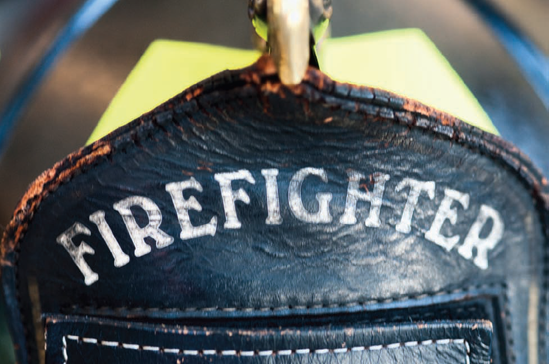
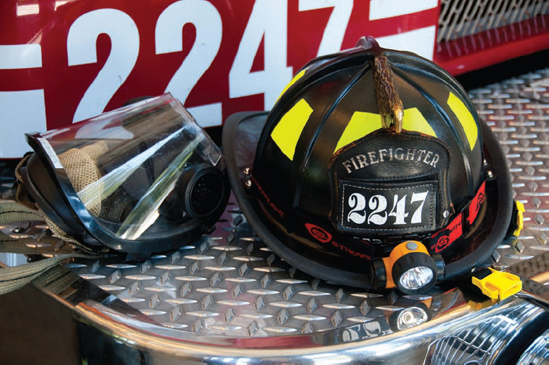
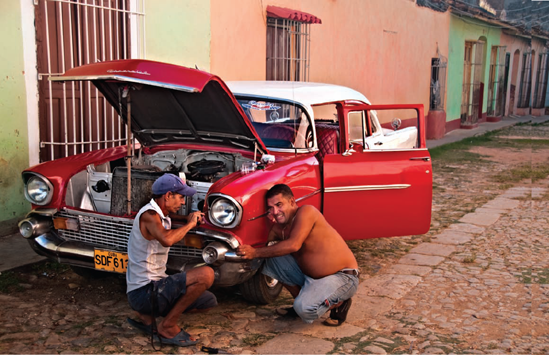
While wandering the back streets of Trinidad, Cuba, I came upon these two men working on this antique car. I thought their relation to the car, and to each other, told an interesting story about concentration, endurance, and the struggle for perfection—note the good shape the car is in—so I snapped the photo.
35mm, 1/100 of a second at f/5 and ISO 100, hand held
This detail shot of a Cuban cowboy at work tells a story: the rope is in everyday use and highly functional, and the rubber boots show that the work is practical—not stylized in the way that the gear belonging to a rodeo cowboy might be.
112mm, 1/250 of a second at f/8 and ISO 100, hand held
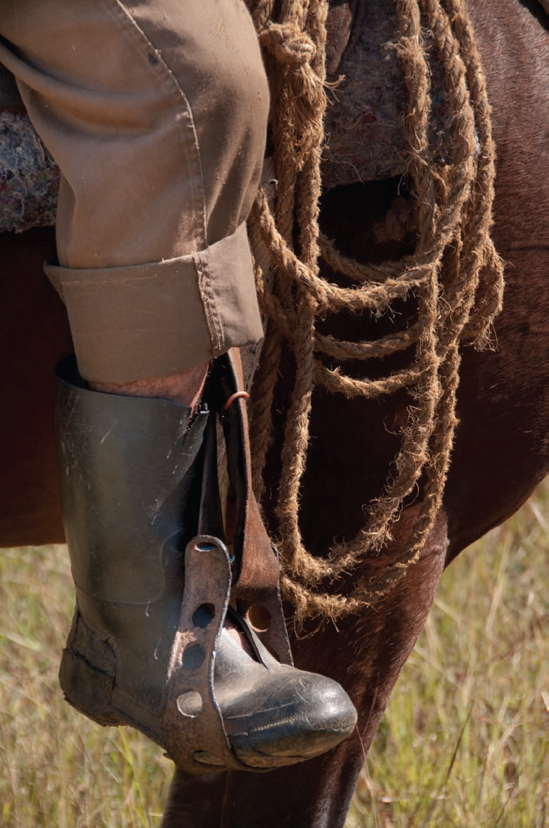
Play can mean many things to different people For some people, play means a game of chess or reading a book Some simply like to stroll Others are more active, and like to run, jump, splash—or play organized sports Acting is play, and travel can be also Depending on preferences and context, anything that is neither work nor sleep—in other words, leisure time—can be considered play.
Using the verb "to play" in a slightly different sense, playing is what kids do To play means to have fun, and if you encourage your portrait subjects to play, you are likely to get casual and interesting photos Photos of people at play can reveal a side of the person not normally seen.
I suggest that you keep an eye out for people playing Play usually represents a photographic opportunity Try to conceptualize your photo so that it shows what is special about the play For example, a slow shutter speed can exaggerate motion—and a fast shutter speed can stop motion crisply.
Furthermore, it's important to bring play into your photographic portraits even if it is not present organically After all, photography is supposed to be fun If your portrait subjects are encouraged to "mug it up" some of your shots may be over the top and unusable But once things settle down, you are likely to get more lively, interesting, and unusual portraits.
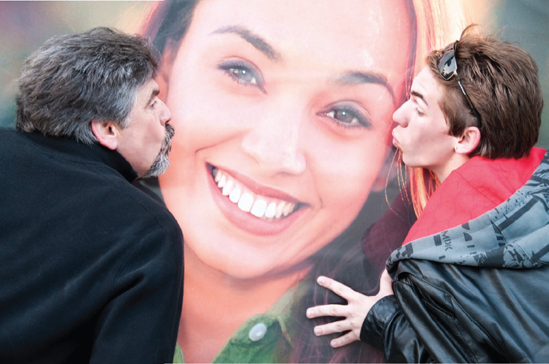
I asked this father and son to kiss the woman on the billboard. They had fun playing along with me, and I got an interesting portrait.
70mm, 1/100 of a second at f/5 and ISO 500, hand held
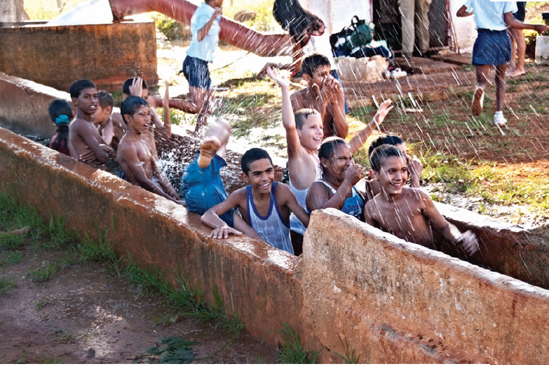
Kids everywhere love to play in water; these youths are cavorting in an irrigation channel in the Cuban countryside.
55mm, 1/60 of a second at f/4.8 and ISO 100
I asked my son Nicky to jump, and was ready to capture him in midair as he experienced the exhilarating effects of pretend flight.
12.7mm (about 40mm in 35mm terms), 1/160 of a second at f/8 and ISO 80, hand held (taken with a Canon Powershot G9)
Pages 88—89: Many people in Havana, Cuba live a great part of their life on the waterfront boulevard called the Malecón where the ocean breezes are much cooler than the humid streets of the barrio. Life along the Malecón is a never-ending promenade, with couples embracing, families quarrelling, and people walking back and forth.
I used a long exposure (1.6 seconds) to show this motion as blurs of color.
150mm, 1.6 seconds at f/22 and ISO 100, tripod mounted
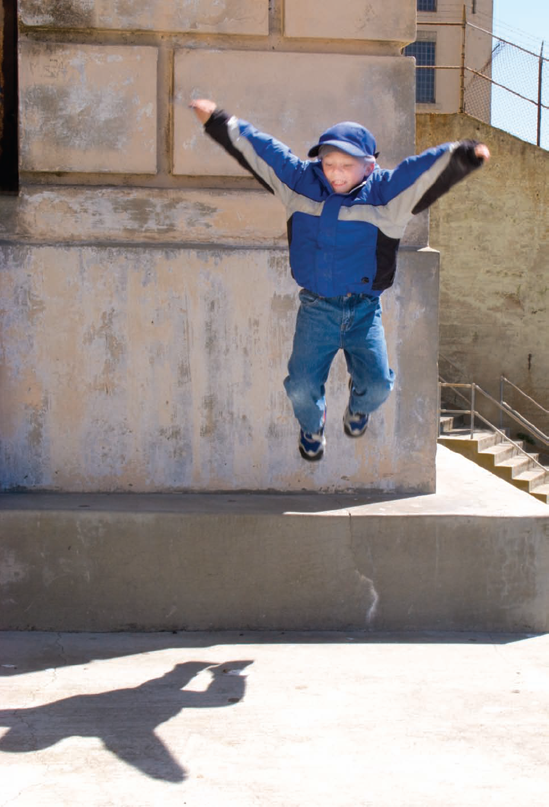
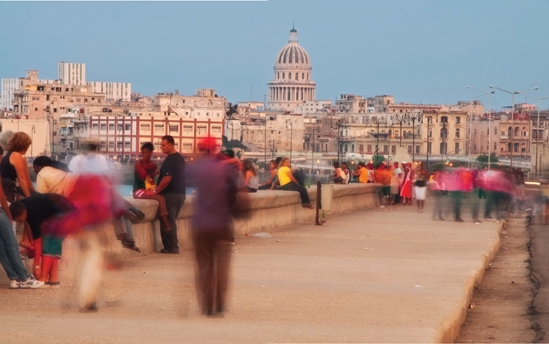
When you work with a model there is a different dynamic in operation than when you are photographing your family, someone you don't know on the street, or when someone has asked you to take their photo It's the model's job to pose for you, and most professional models have a great deal of experience posing.
While many professional models have a repertoire of poses, it works best in most cases for the photographer to be very involved in posing the model In other words, you should usually be prepared to tell the model what to do Be professional and serious about work (although this doesn't mean you can't have fun!) Setting a productive tone, along with clear and supportive direction on the part of the photographer, helps create an effective portraiture session with a model.
Think of it this way: part of your job when photographing a model is to be a director The model can't see the scene from the camera's viewpoint, but you can Sometimes it helps to show the model what you've captured on your LCD, but this always takes place after the shot has been made.
Since you're the one in the position to see what impact the choices you've made arehaving—and since you'rethe only one to know the look of the photos you've previsualized—you need to be the one controlling the ongoingdirection of the shoot.
I welcome input from the models I work with, but I realize that I am the one calling the shots If I do so in a courteous and precise manner, this helps both me and the model relax.
Don't assume that you'll always have to pay a model Good photographers can sometimes work with models on a trade-for-services basis, where you provide the model with images for use in their portfolio Be careful to spell out the details of this kind of arrangement in advance How many digital image files at what resolution will the model get? Willthese files be processed and retouched in Photoshop (see Portraits in the Digital Darkroom starting on page 196)? Who—model and photographer —will have rights to license the photos? Sometimes trading modeling for photography can be a win-win situation for both parties—but also it's less complicated to pay for a model's time, and have them sign a standard model release (see pages 61—62 for more about releases).
Forget whatever fantasies you may have that all models are gorgeous, tall, and busty blonds Photographic models come in all genders, shapes, and sizes Even if you consider glamour models, no two are alike—and models who don't tend towards a stereotypical look can be the most fun to work with.
I posed this model on a black background with low-key lighting in order to create a glamorous effect.
31mm, 1/100 of a second at f/5.6 and ISO 100, hand held
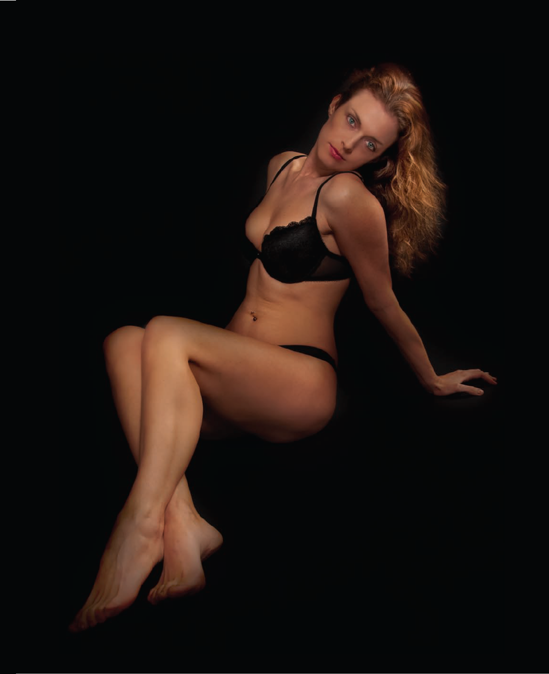
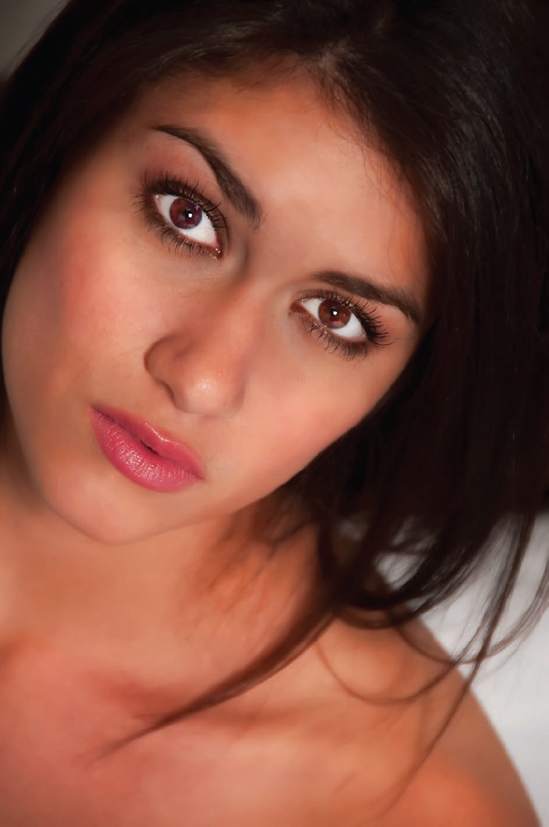
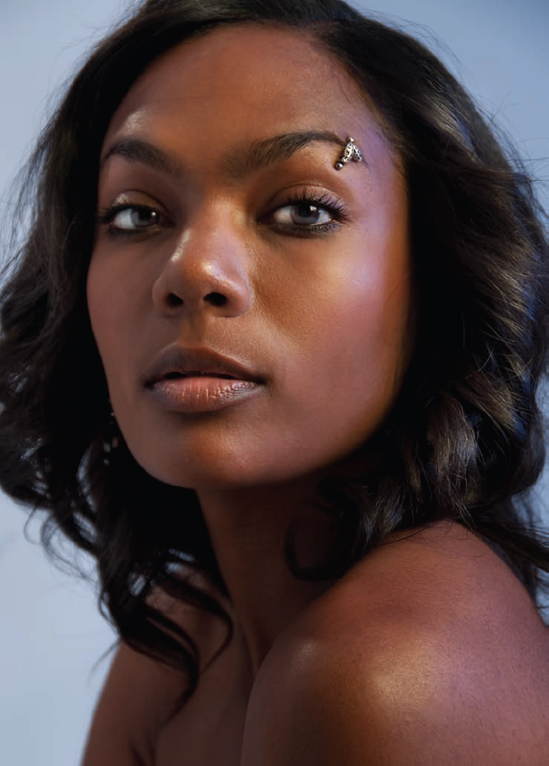
This is a portrait of a striking and attractive figure model who was used to working with artists and photographers. Since her specialty was holding difficult physical poses, I thought it would be interesting instead to create a simple portrait of her face.
105mm, 1/125 of a second at f/7.1 and ISO 100, hand held
My idea in this portrait was to emphasize the model's striking eyes. I instructed her to whip her head around from right to left. When the hair fell in exactly the right position to complete the composition, I snapped the photo.
170mm, 1/125 of a second at f/5.6 and ISO 100, hand held
Sometimes I shoot models for a specific project with a planned and previsualized image in mind At other times, I photograph models for fun Either way, it is important that the model I cast is appropriate for the type of image I want to create Good portraits show the inner person to at least some degree, and one thing that you cannot change—even with Photoshop—is the essential nature of the person posing for the camera.
For example, a brassy and busty blond might be very appropriate for a pinup shoot intending to echo the look of Marilyn Monroe. But this model would probably not work for an image that was intended to communicate contemplation. The model Maya shown below is pretty in an understated and un-made-up kind of way, but would never do for a shoot portraying a "vamp."
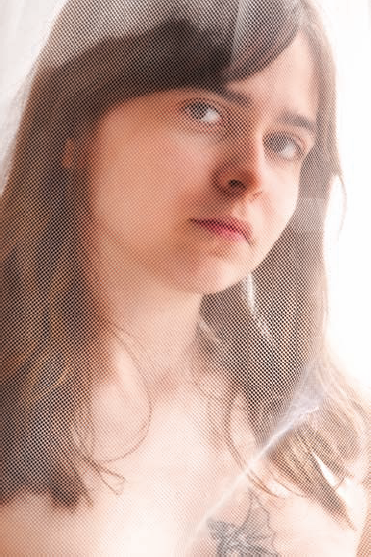
Fortunately, there are models with every possible characteristic you can imagine out there If you haven't worked with a model before, study a model's online portfolios before you commit to working with them Model web sites such as Model May-hem, www.modelmayhem.com, provide a great way to find many different kinds of models If you don't think you have the ability to evaluate a model based on an online profile and portfolio, then by all means get the input of a friend I don't want to be sexist about this, but I find that women are often better than men at evaluating models for suitability to a task; so whenever possible, I get my wife's input before deciding to work with a particular model.
I used a white gauze curtain to enhance this natural-light portrait. The primary source of light was a window to the right of the photo; a reflector on the left helped balance the lighting. (For more about lighting, turn to page 140.)
This model has a look with an ing è nue appeal, so the gauze curtain was appealing. However, when creating a photo using models, one has to consider whether the look of the model fits with the photographic conception.
200mm, 1/125 of a second at f/7.1 and ISO 320, hand held
I was struck by the simple and natural facial lines shown by this model, and strove to create a portrait that was apparently simple in lighting and concept—to echo the simple but elegant look the model favored.
200mm, 1/200 of a second at f/9 and ISO 100, hand held
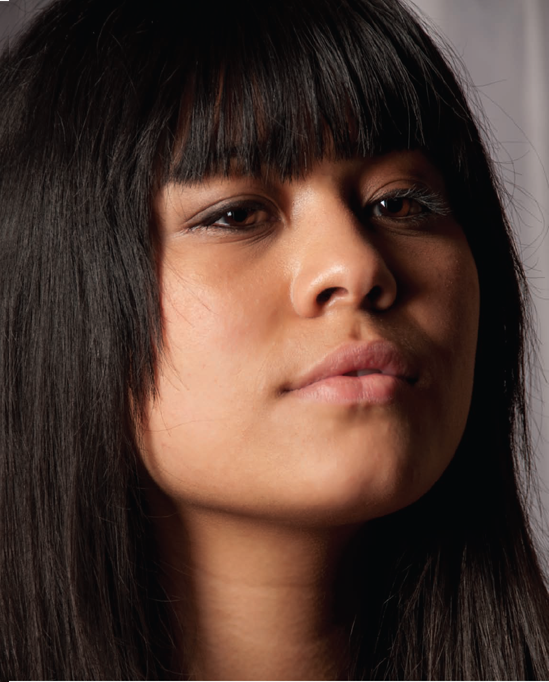
To prop a model or a portrait subject means to add an artifact to the photo, particularly one that is relevant to the subject Effective propping has a great deal to do with the success of a portrait—and a prop that doesn't fit with the character of the subject or the context of the photo means almost guaranteed failure In other words, propping is surprisingly important.
Some props work because they are significant to the subject and reveal information about the subject's character For example, a particular old-fashioned pen that the portrait subject always uses might fall into this category Eye glasses and pipes are other examples that might be used for this kind of prop.
Other props are more generic in nature, and work by changing the context of the portrait For example, I was photographing a model in a fairly generic studio setup Adding a western-style hat converted this model into a "cowgirl" (see page 99) The hat is a simple and basic thing, but it changes the entire context of the portrait.
Props don't have to be physically small A ladder someone stands on is a prop, as is an overstuffed arm chair someone sits in Props can be intimate, or large and dominating—and everywhere in between.
Whatever their size, it is extremely important to pay attention to props.
Effective use of props makes even mundane portraits seem to sizzle—and inappropriate and unattractive propping makes otherwise excellent character studies fail.
When is an article of clothing a prop Can a special background be considered propping What about over-the-top make-up
There's no really clear dividing line, but props tend to be things the subject can handle—pipes, canes, umbrellas—or stand, sit, or recline upon.
If you are ever photographing someone and feel that you have come to a dead end, try adding or changing the props that are in use It's amazing how a prop can change the entire nature of a shoot.
For large-sized props such as beds, ladders, and over-stuffed arm chairs, you may have to improvise based on what is available at your shooting location I like to think about propping in advance, and to bring with me a box or two of smaller things that I think might be appropriate—and might act to stimulate the imaginations of portrait subject and photographer.
I photographed this bride in a dark underpass, positioned so that a shaft of light illuminated her in contrast to the surrounding shadows. The wedding bouquet is an attractive prop in this photo. Try visualizing the image without the bouquet—you'll see that it wouldn't be nearly as effective.
50mm, 1/250 of a second at f/4.8 and ISO 200, hand held

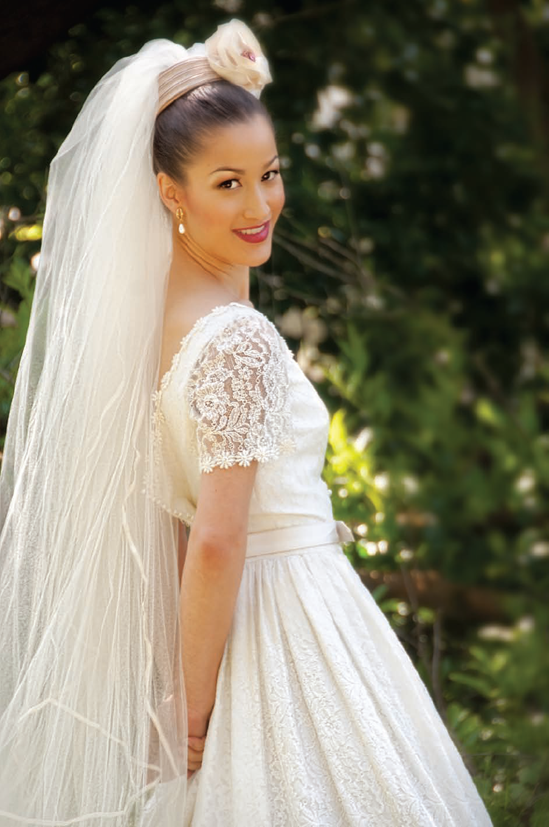
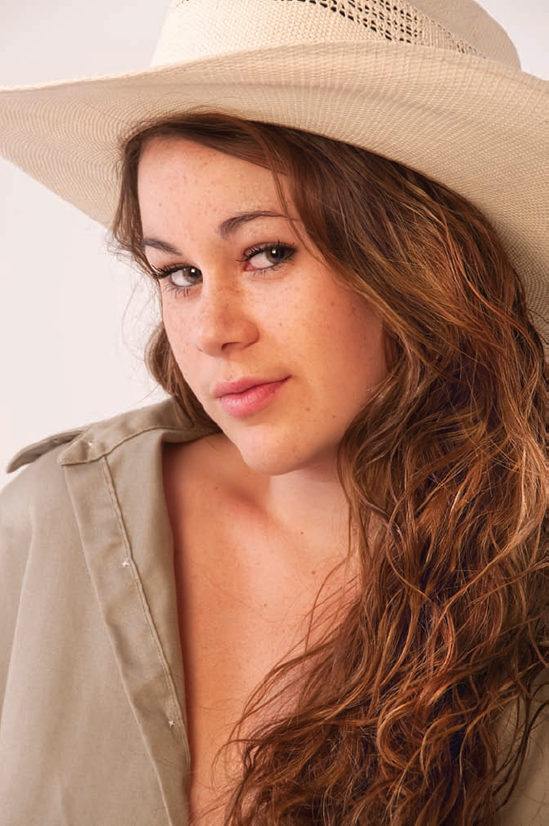
The obvious prop here is the hat, which gives this model a very different look than when she was carrying a pink parasol (see page 47 for a look at the same model propped very differently). However, her magnificent and partially wild mane of hair should also be considered a photographic prop, with many different possible "uses" within a photo.
200mm, 1/160 of a second at f/9 and ISO 100, hand held
To the eternal good fortune of wedding photographers, nowhere are attractive props more likely to be found than at weddings. The elaborate wedding dress shown here is as much a prop as it is a dress. Veils also make an attractive and romantic prop.
135mm, 1/125 of a second at f/5.6 and ISO 200, hand held
In our society, clothing is vastly important As Polonius famously and pompously noted in William Shakespeare's play Hamlet, "Clothes make the man" On the other hand, on either man or woman, clothing might be considered merely a prop After all, we all came naked from the primordial ooze (or maybe it was the Garden of Eden?) But in fact, clothing is important in portraiture—and overlooked at one's peril.
In some cases—such as conceptual highfashion photography or wedding portraits—elaborate clothing has its place.
But for the most part, when it comes to clothing, simple is better Many shoots arewrecked when clothing clashes. In these cases, there's very little that the photographer can do to salvage the situation—except suggest that a simple, black turtleneck might work better.
Assuming that the point of the shoot is to create an attractive portrait, you should try to be careful that the clothing works well with the coloration of your subjects Many people don't have a very good sense of this for themselves, so professional portrait photographers with studios often find themselves with an inventory of clothing.
You can take the same approach in a low-key way If you are photographing in the studio, have some simple choices available For women, some nice fabric can be used in a variety of ways as a wrap For men, it's hard to go wrong with shirts that are basic black or basic white.
As a portrait photographer, you have a great deal to keep track of including lighting, the comfort and psyche of the portrait subject, along with your overall photographic composition. Clothing is one more element that can make or break an image.
On a commercial or advertising type of shoot, there is often a wardrobe stylist making sure the clothing is right Having someone you know who is good with style and clothing can be beneficial to any portrait This person can help you with the larger issue of finding the right clothing for the subject, or at least modifying an outfit to not ruin the shoot An extra set of eyes can also help you spot the all important details such as buttons that are not straight, stained collars, and lint on dark clothing.
This is an interesting photo of two models, partly because it shows that elaborate clothes do not always create an elegant look. The outfits shown here were carefully picked by a stylist, but they don't really work well with the way these gorgeous models are made up.
The intention of the shoot was to make up the model on the left to look like a "neo Geisha." This is an interesting concept and the make-up really works for this idea. However, the ruffled blue and yellow dress doesn't carry the Geisha idea.
The clothing on the model on the right works better because it is more simple.
1/160 of a second at f/8 and ISO 100, hand held
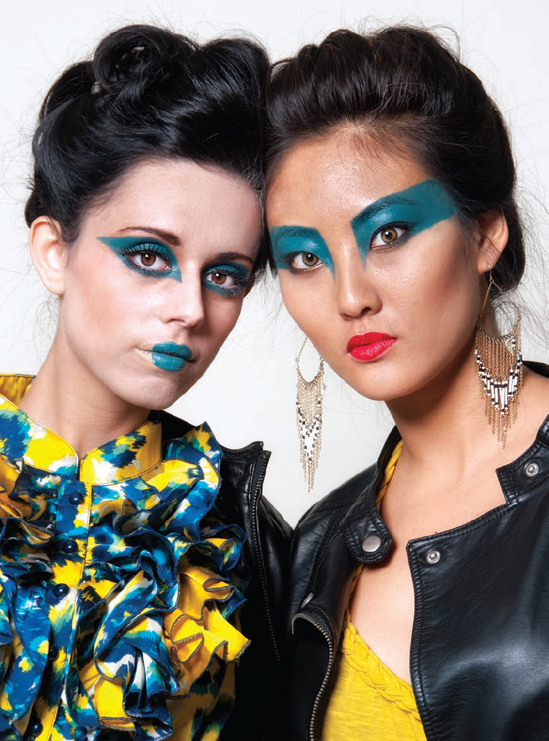
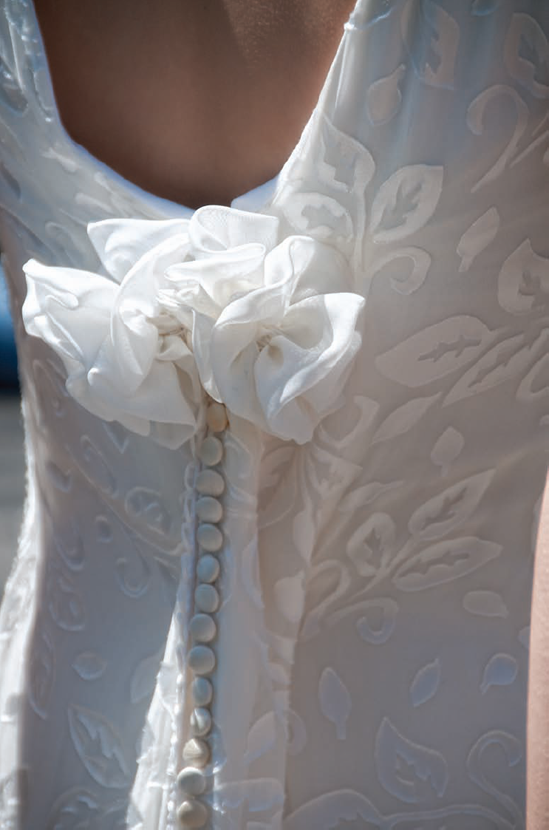
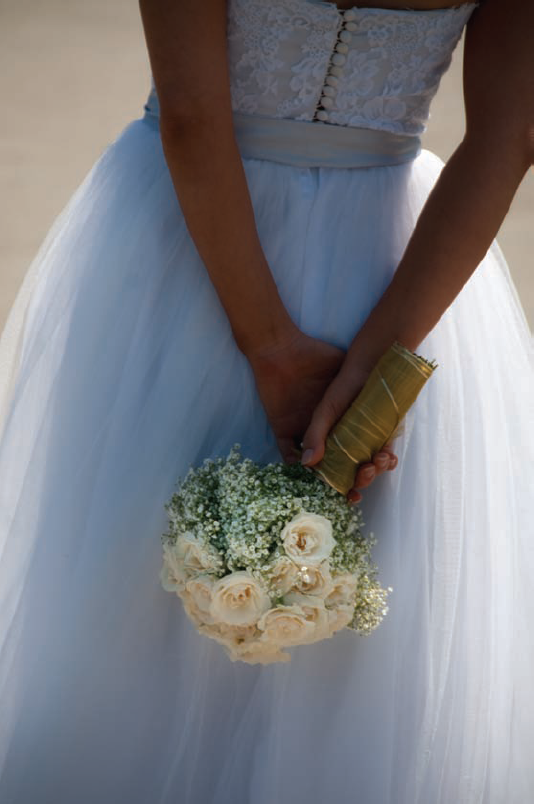
Most wedding portraits are largely about the wedding dress. A photographer who doesn't pay attention to the dress and related items is missing a great deal—as the client will likely let him or her know. In this photo, the bridal bouquet—itself an important and beautiful prop—is featured and complements the wedding dress.
200mm, 1/1250 of a second at f/5.6 and ISO 200, hand held
Even the small details of this handmade wedding dress are beautiful. Unless this bride is a highfashion model, she is unlikely to often wear a garment so elegant and tailor made. It is therefore important to capture the back of the dress on this special day.
200mm, 1/1000 of a second at f/5.6 and ISO 200, hand held
If clothes make the man, then hair and make-up define the woman, particularly when it comes to models Most professional models are sensitive to issues of hair and make-up, and have at least rudimentary skills with doing their own However, for best results in a professional context, you are well advised to work with a professional hair stylist, and a make-up artist Since these professionals need time to do their job, you'll need to plan your photography session accordingly.
In this society, we have almost a willful suspension of disbelief when it comes to make-up. Almost all models, male and female, have at least some make-up applied before they are photographed for a magazine, or appear on television or in a movie. We are often asked to believe that people who are wearing make-up are not.
Would the beautiful crash survivor in the Amazon still be wearing perfect mascara after seven days in the jungle? You tell me Any kind of objective close inspection shows make-up—including subtle eyeliner on male actors —but we are in denial about this fact.
The result of this collective hypocrisy is that portraits without make-up, particularly of women, tend to look bare, naked, and neither as beautiful nor as glamorous as expected.
I'd welcome the day when the really natural look—and not a fake natural look that actually involves cosmetics—is fashionable. But until that day comes, I have to accept reality. It's far easier to create a nice portrait if the model is wearing appropriate make-up than to fix the ruins in Photoshop!
My preference is to work with a model who knows how to apply cosmetics that look good on camera, or with a make-up artist. It is important to communicate the look you want with whoever is doing the make-up and hair. For reasons of self-defense alone, I've had to learn a bit about make-up.
You, too, should learn to be able to tell when foundation has been applied too thickly, when mascara has not been well applied, when eye shadow is not even, and when eyebrows have not been shaped attractively It's far easier to correct these problems before you've made the photos than to give the model a virtual make-up job in the digital darkroom.
Make-up can be more than trying to create a glamorous and pseudo-natural look In my opinion, creative make-up artistry is a great thing and can lead to spectacular photography—although the results are seldom conventional portraits.
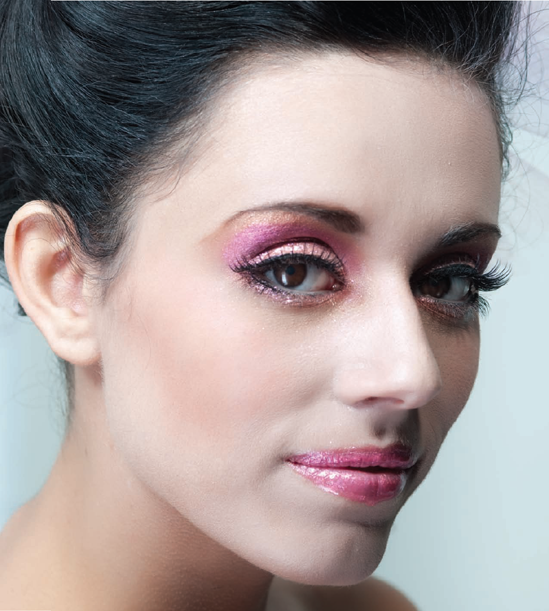
This model also appears on page 6 and is the model on the left in the photo on page 101 In each photo, she has different make-up, hair, and propping If you compare these images, you'll see what a great difference creative and effective make-up artistry and hair styling can make in the overall appearance of a photograph.
100mm, 1/160 of a second at f/5.6 and ISO 100, hand held
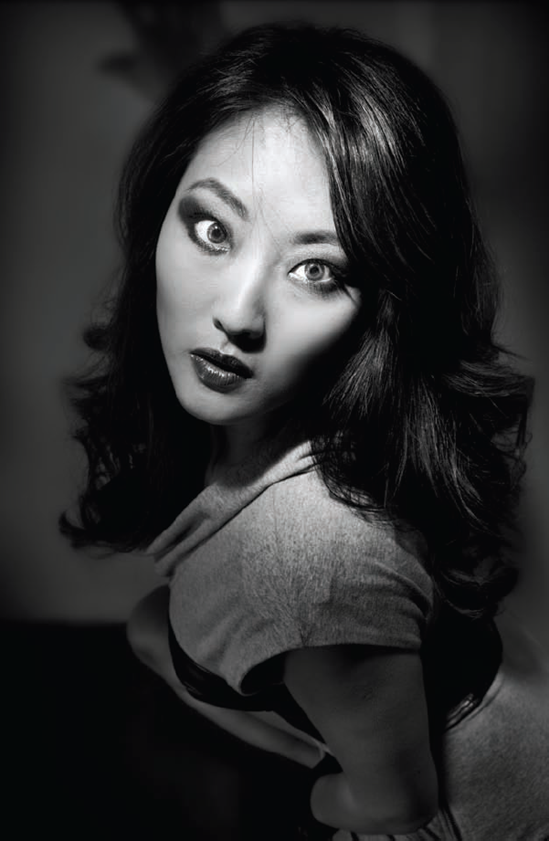
The same person can look very different with and without make-up. In this monochromatic image, I used low-key lighting to accentuate the shape of the model's face and beautiful eyes.
24mm, 1/160 of a second at f/8 and ISO 100, hand held
This is the same model again shot using low-key lighting to fully bring out the impact of the striking eyes and interesting, exotic make-up. With different make-up, you would never recognize her as the same person.
200mm, 1/160 of a second at f/6.3 and ISO 200, hand held
